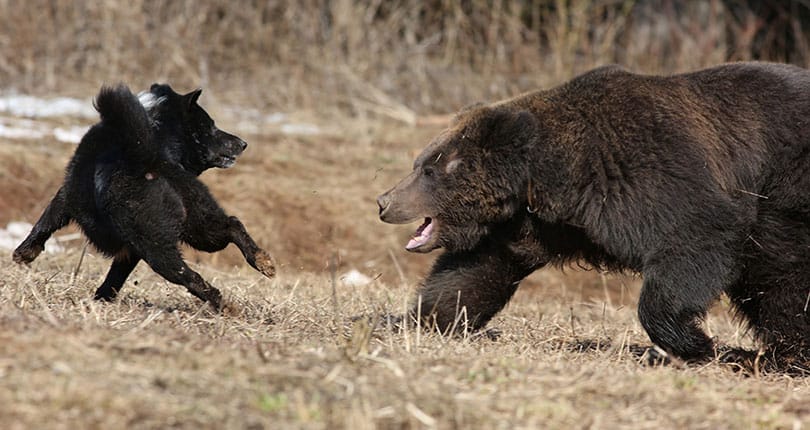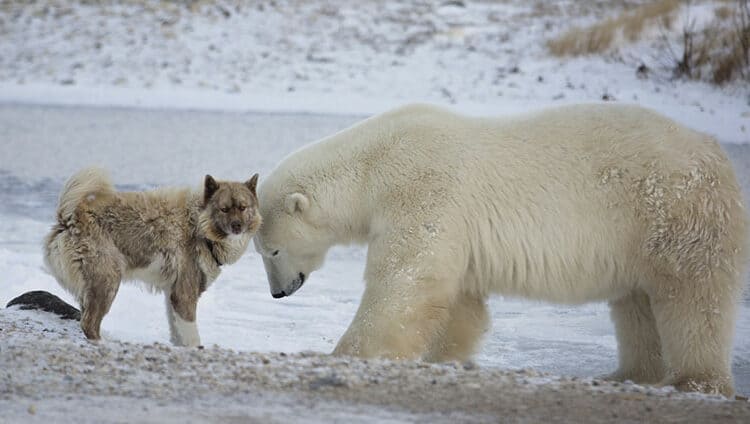If you compare a fluffy Chow Chow with a baby bear, you’ll find a few similarities, including big hairy paws, abundant fur, and adorable little faces. But while bears and dogs are not officially related, there are a few nuanced principles of species classification and evolution to discuss.
Why Do People Wonder If Bears and Dogs Are Related?
Many new methods of classifying living beings, which are based on deciphering the genome of organisms, among other things, have led to surprising discoveries.
While traditional classification is based on the appearance and similarities between living things, cladistics, also called phylogenetic systematics, classifies living things according to their relationships, which are determined from molecular, cellular, bone, and anatomical data.
For example, the crocodile looks like a big lizard, yet it is evolutionarily closer to birds than lizards because like birds, it has a gizzard, which is an evolved trait that lizards and snakes lack.
Therefore, scientists use these evolved characteristics to find relationships between different species and then reconstruct the evolutionary histories of the species.
So, does this mean scientists have discovered that bears and dogs were more closely related than previously thought? The answer is that is: not quite.

Dogs and Bears Do Have Evolutionary Similarities
Dogs and bears do belong to the same suborder, Caniformia, which comes from the order Carnivora. This sub-order includes many carnivorous species, including raccoons, foxes, wolves, mustelids (ermines, ferrets, polecats), and even seals. The Carnivora order also has another suborder, Feliformia, to which felines belong.
However, although dogs and bears are part of the same suborder, they are not classified in the same families. Dogs are part of the Canidae family, while bears belong to the Ursidae family.
In short, dogs and bears are related by suborder, but their families and species differ. These animals do have a common ancestor, but this ancestor is the same for all carnivores!
Dogs and Bears Do Have a Common Ancestor
About 54 million years ago, after the domination of reptiles, a new line of carnivorous mammals appeared in North America: the Miacids. These were small, weasel-sized forest carnivorous animals whose family is called Miacidae. Miacids spread rapidly and would have given rise, 32 million years ago, to three main branches: “cats”, “dogs,” and “seals.”
In other words, dogs and bears evolved from the same ancestor, but in the same way that cats, seals, foxes, weasels, and many others did.
Final Thoughts
Although dogs and bears are not closely related, they share evolutionary similarities and a common ancestor. These animals, however, belong to distinct families and species and are separated by tens of millions of years of different evolutionary paths.
Featured Image Credit: Shutterstock














